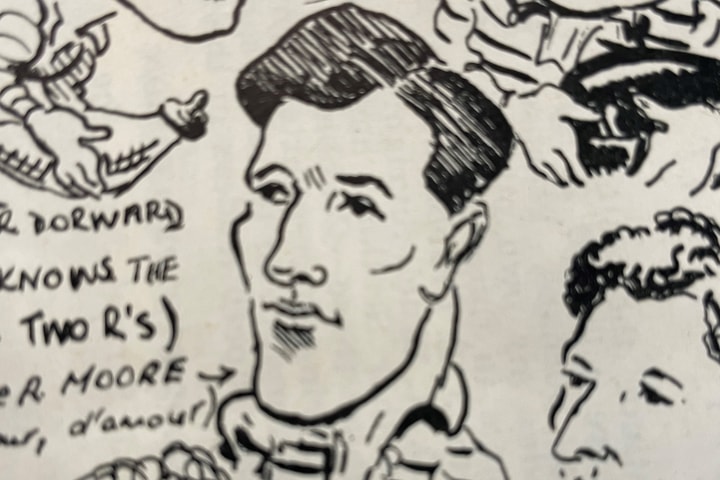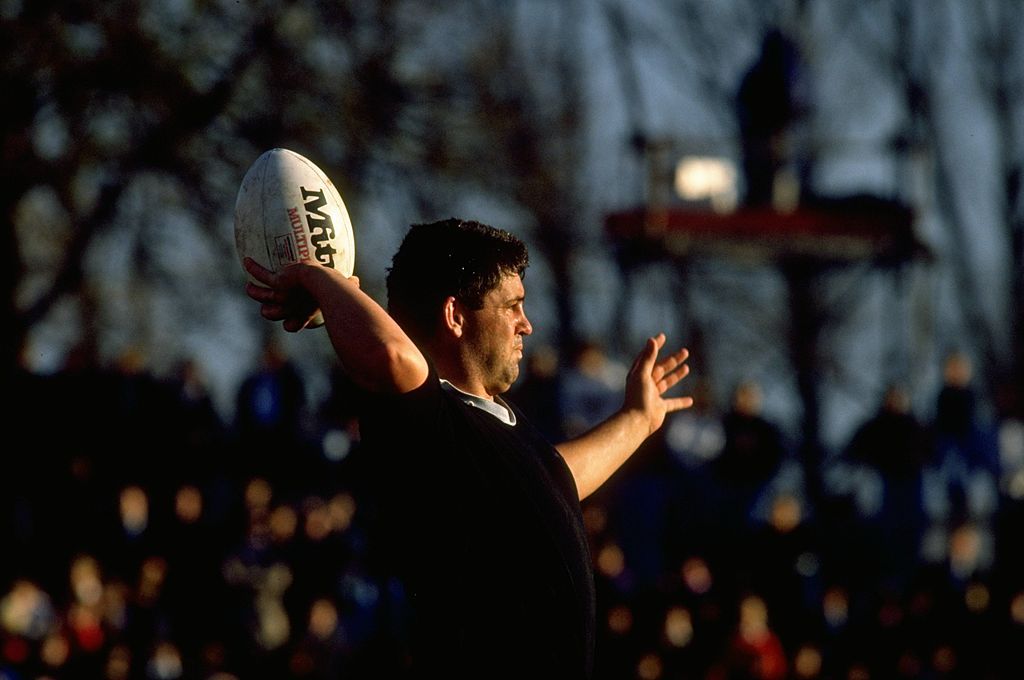
21 November 2025

In the days before substitutes were introduced into international rugby, many players faced a dilemma following their selection to play for their country for the first time. Sometimes the selectors chose their sides a fortnight or more in advance of the match and so the chosen player had to work out how to manage the next 10-14 days before stepping out for their country on the field of play as a full international. This might mean not turning out for their club on the Saturday before an international, or perhaps keeping quiet about a niggling injury which threatened to prevent them appearing on the international stage.
Although most of the 90-plus players who never took the field after selection come from the early days of international rugby up until 1914, there were still more than 20 players who suffered this misfortune in the years leading up to the 2nd World War. There were no withdrawals from Irish teams but there was one Scotsman affected, the prop Jim Morrice of Aberdeen Grammar School FP whose throat infection caused him to withdraw from the Scottish team to play Ireland in 1934.

RL 'Pup' Raymond was an Australian-born winger on a Rhodes scholarship at Oxford University. He had played full back in the 1924 Varsity match against Cambridge University and had a serious international pedigree having already played 13 times between 1920 and 1923 for New South Wales in matches now regarded as full internationals. Selected by the English selectors to play on the wing against the touring New Zealand team in January 1925, he withdrew three days before the match due to a back muscle injury incurred in the final trial ten days earlier. He was never chosen again for England.
There was high drama in English rugby circles on the morning of 18 January 1930. England were due to meet Wales at Cardiff Arms Park that afternoon and Henry Rew, the Exeter and British Lions prop, withdrew from the team. It was expected that Norman Matthews, the uncapped Bath hooker and officially nominated front row reserve, would take his place. But the selectors had other ideas. The highly experienced Bristol captain, hooker Sam Tucker capped 22 times, was available and DA 'Joe' Kendrew, the original choice at hooker, could play prop, so the selectors decided in mid-morning to ask Tucker to fly from Filton Aerodrome, north of Bristol, to Cardiff to take Rew's place in the England team.
Norman Matthews had trained with the England team at Penarth the day before and had changed into his England kit when Tucker arrived in the dressing room half an hour before the kick-off. Matthews changed back out of his kit and watched the match from the stands, possibly as close as anyone has ever come to an England cap in its long history.
Uniquely in the 20th century, the three-week postponement of the Ireland v Wales match at Ravenhill caused by an exceptionally heavy snowfall during the week of 8 March 1937 cost three Welsh players their caps. All three players were late call-ups - Tommy Stone of Cardiff at full back replacing Vivian Jenkins, the Cardiff centre Horace Edwards replacing Claude Davey and Charlie Anderson of Maesteg who replaced Trevor Williams of Cross Keys. By the time the match was played on 3 April, Stone had 'gone north' to join Barrow rugby league club and Davey and Williams were fit again. As a result, the three players were the only Welsh players picked for their country between the two wars who did not take the field.
For four Frenchmen, the cancellation of their country's international match against Germany on 26 March 1939 cost them their place in French rugby history. Although the four home nations had ceased playing France after the 1931 Five Nations tournament because of deep concerns over professionalism, France had continued to play international rugby against Germany, Italy and Romania. However, increased tension over the state of France's relationship with Germany led to the very late cancellation of this match and France have never played Germany since. The four unlucky players were the winger, Roger Gibert of Stade Bordelais, the centres Noel Brazes of Perpignan and Auguste Lassalle of Pau, and the forward Fred Didier of Vienne.
In the years after the war leading up to the introduction of professionalism, fewer players lost out on their chance to represent their country. Unlucky were those forwards such as Wat Davies of Hawick and South of Scotland in 1973 and Emmet O'Rafferty of Wanderers and Leinster in 1978 who both withdrew injured after selection and were never picked again.

1989: Warren Gatland of New Zealand throws the ball during the match against Newport at Rodney Parade in Newport, Wales. New Zealand won the match 54-9. \ Mandatory Credit: Russell Cheyne/Allsport
Even when substitutes were introduced universally in the 1960s, up until 1996 the players selected as subs had to wait on the bench to see if they would be called upon to replace an injured player and thereby win that coveted cap. This on occasion led to players being capped although only a substitute on one or two occasions, and other players never being capped despite sitting on the substitutes bench for many international matches - Warren Gatland, the Wales and British Lions coach was a prime example. Although Gatland played 17 times for the All Blacks as hooker in tour matches, the first-choice hooker Sean Fitzpatrick never left the field throughout the many times that Gatland sat on the bench and so Warren Gatland is not listed as having won an international cap.
New Zealanders, South Africans and Australians undertook overseas tours at regular intervals throughout the 20th century so there were many players such as Gatland who were able to win official status as All Blacks, Springboks or Wallabies without taking the field in a test match. The winger Bruce Harland played three matches for the Wallabies in New Zealand in 1962 but was unable to take his place in the 1st test team due to an ankle injury.
The Otago full back David Halligan withdrew with a groin injury from the New Zealand side to play Scotland in June 1981. He could have played but felt that he wasn't fit enough to last out a test match. A year later, he sat on the bench for the 3-test series against Australia in 1982 without taking the field so he did not even have the consolation of being an All Black. Bruce Hemara, the Manawatu hooker and an All Black in Argentina in 1985, was picked to play for the All Blacks in 1986 against France in a test match where most of the All Black first team was suspended due to their taking part in the recent Cavaliers tour of South Africa. He withdrew with a rib injury sustained in training. His replacement was Sean Fitzpatrick who proceeded to miss only two tests over the next ten years and Hemara's chance of playing in a test had gone.
For most players in the UK countries who toured much less regularly before professionalism, the summit of their ambitions was restricted to appearances for their national XV and 'A' and 'B' sides in non-cap internationals. These were often against countries such as Argentina, Italy and Fiji, described before the first World Cup in 1987 as minor countries and therefore not capped fixtures. The concept of 23 players taking the field in a test match was still in the future.
Sources:
Before the Lemons - Coughlan, Hall and Gale (Tempus Publishing 2003)
The Book of English International Rugby 1871-1982 - John Griffiths (Willow Books 1982)
History of Welsh International Rugby - John Billot (Roman Way Books 1999 - 3rd edition)
Les Capes du Matin Volume III - Georges Pastre (Midi Olympique 1970)
Oxford University RFC Centenary History- Ross McWhirter & Sir Andrew Noble (Redwood Press 1969)
Newspapers: L'Auto - Irish Times - Scotsman - Sportsman - South Wales Daily News - Western Mail
About the Author - A professional musician and arts administrator, Richard Steele has been on the committee of the World Rugby Museum at Twickenham since 2005 and is the co-author of the RFU's 150th anniversary book 'England Rugby 150 Years'.
Visit our website, book your visit and follow us on Facebook, Twitter and Instagram.